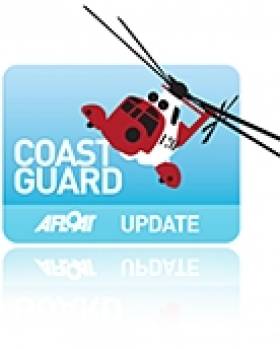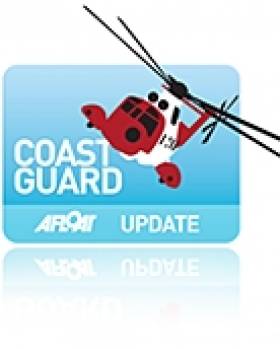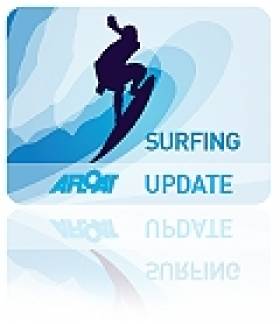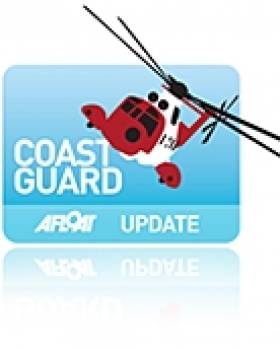Displaying items by tag: Doolin
Doolin May Soon Get New Coastguard Station
The Irish Examiner reports that the Doolin coastguard unit is finally set to get a new coastguard station.
One of the busiest search and rescue units in the State, the Doolin unit of the Irish Coast Guard currently has to drag its boat some 2km by tractor to Doolin pier.
Much to the delight of local campaigners, the Office of Public Works is now inviting tenders for a €1.9 million dedicated coastguard facility at the pier, following the granting of planning permission by Clare County Council as part of a development plan for the area.
However, the unit's officer in charge Mattie Shannon is cautious about a start date for construction, as the Department of Transport will not be able to provide funding for the project until next year at the earliest.
Fianna Fáil TD for Clare Timmy Dooley told the Examiner: "The least the current Government can do is honour the commitment of the previous government and ensure that the appropriate finances are in place for next year."
The Irish Examiner has more on the story HERE.
Ferry Runs Aground off Doolin for Three Hours
According to ferry operator Kevin O'Brien, there were no passengers on board at the time and the vessel got under way again when it was lifted from the rocks with the tide. Mr O'Brien added "this was a very minor incident and there was no damage to the ferry. Doolin is tidal so these things do happen. Even a few inches of water can make a difference".
The Irish Coast Guard was notified of the incident at midday, and its marine rescue co-ordination centre in Dublin requested that members of the local Coast Guard unit board the vessel to assess if there was a pollution risk.
Doolin Coast Guard personnel carried out an inspection and confirmed the ferry had not been damaged and there was no risk of pollution. At about 2.15pm the ferry got under way again with the tide. The company was able to operate services to and from the Aran Islands with its second vessel.
Coastguard Calls for Doolin Pier Go-Ahead
The Doolin Coast Guard Unit has urged Clare County Council to continue its €6 million development plan for Doolin Point.
The pier plan has faced opposition from surfers who argue that the development will ruin the popular waves in the area.
The Irish Examiner reports that in the latest submission to the council, the Doolin Coast Guard Unit supports the development, claiming the current pier is "regularly over-congested" in peak tourist periods.
"This, in turn, can make it very difficult for our members to launch our boats in an efficient manner where time is of the essence," states the unit's officer in charge Mattie Shannon.
A separate submission by Doolin Tourism and Doolin Community Harbour Co-op, backed by 150 signatures from locals, called on Clare County Council to go ahead with the plan.
They dismissed surfers' concerns, stating that "the proposed pier and breakwater will not create a back wash effect" on the surfing waves at Crab Island and other areas.
The Irish Examiner has more on the story HERE.
Surfers Stand Strong on Doolin Point
Irish surfers have won their first battle against the development of Doolin Point in Co Clare, site of one of the country's top wave spots.
A planned council vote on proposals for the €6 million Doolin Pier development was halted last week after concerns were raised by the surfing community both at home and abroad, Surfer Today reports.
The council intends to lodge a new planning application for a smaller development 25 metres further away from the shore that is intended to have less impact on surfing conditions. A public consultation on the proposed development has also been suggested.
"It is vital that we do not lose the €6 million in funding, but we also have to make sure that the integrity of the waves are protected," said Councilor Martin Conway.
Doolin Point is considered one of the top wave spots in Europe, with significant tourism potential for the Irish economy.
Newborn Bottlenose Dolphin Beaches in Co Clare
The Irish Whale and Dolphin Group (IWDG) reports that a newborn bottlenose dolphin calf was washed up in Doolin, Co Clare last week (photos here).
Measuring 1.2m in length and weighing 21kg, the IWDG said it was "by far the smallest bottlenose dolphin recorded stranded in Ireland".
"From the bent dorsal fin and curled tail flukes we can confidently say this dolphin was only just born and live-stranded," said IWDG co-ordinator Simon Berrow, who added that the group could only speculate as to what happened.
"Maybe it was separated from its mother on birth, maybe she was unable to help it to the surface to take its first breath, maybe the mother was alone and did not have the support of a maternal group to assist at birth."
Go Ahead for New Doolin Coastguard Station
Clare County Council granted planning permission for a €1.9 million coastguard station at Doolin. The new station will have capacity for three boats will be one of the biggest of its kind in Ireland. More from the Clare People HERE.

































































